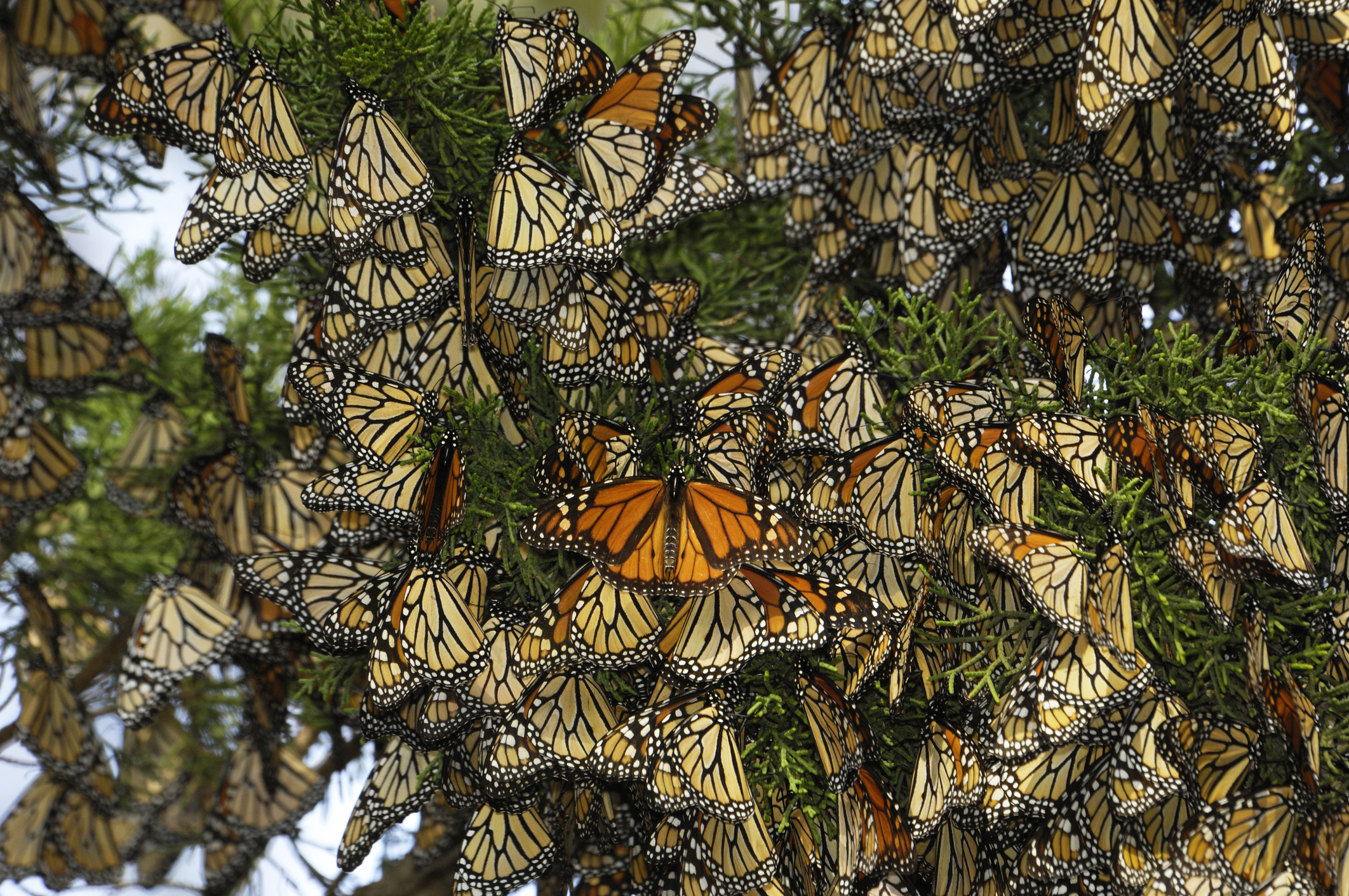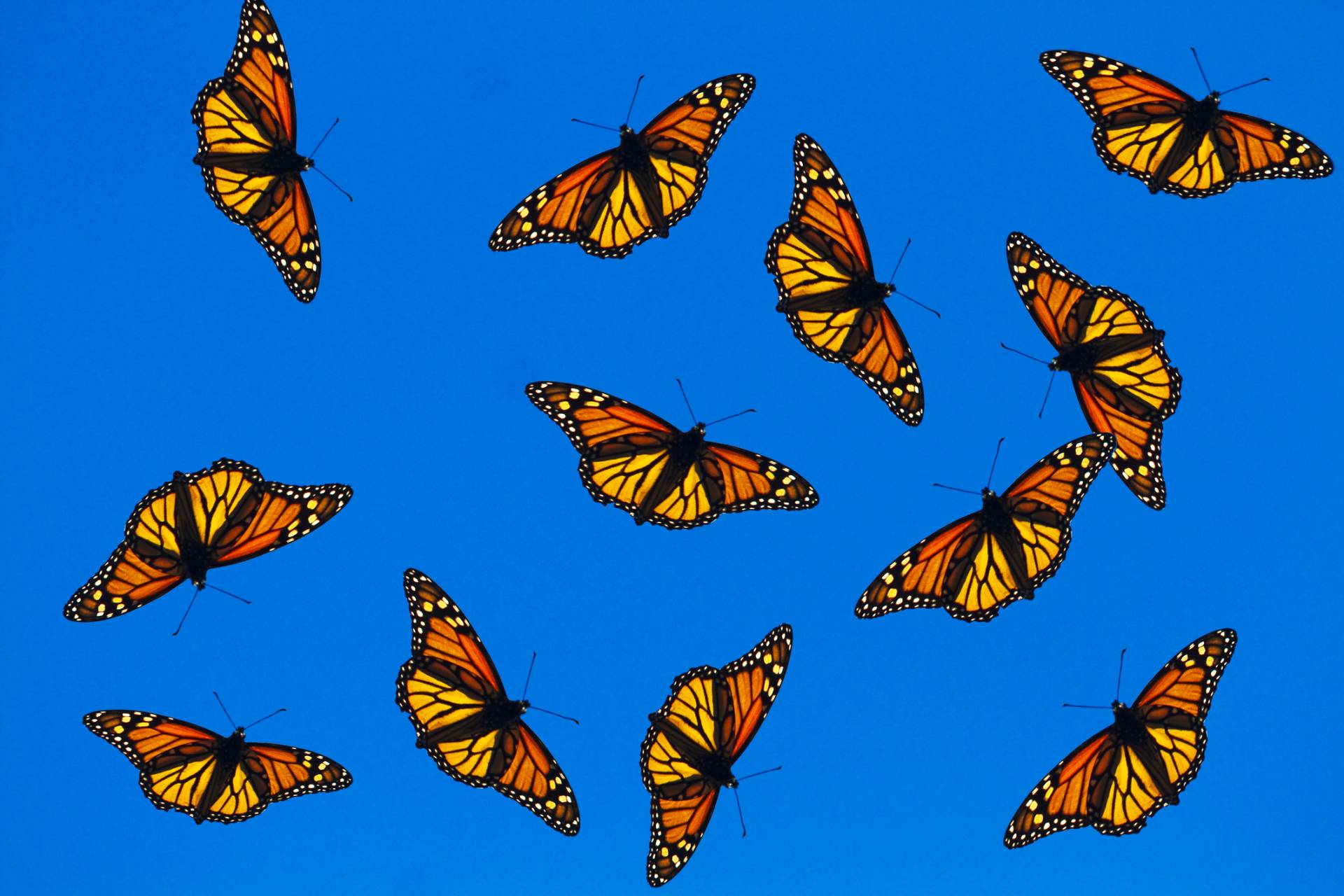Update, 11:30 a.m., Jan. 31
Citizen scientists and volunteers have counted over 233,300 monarch butterflies across the western United States as part of Xerces Society’s 27th annual count.
This total, calculated from Nov. 11 through Dec. 3, 2023, is slightly lower than last year’s count — and remains at just 5% of their numbers from the 1980s when the monarch population was in the millions. But it is far better than 2020’s record-low count of just 2,000 butterflies or 2021’s meager 29,000.
Despite ongoing efforts to save the butterflies, western monarchs face a decades-long severe decline. “A lot of insect loss — not just for monarchs — is linked to habitat loss, and part of the solution is widespread rewilding and habitat restoration,” said Emma Pelton, a monarch conservation biologist with the Xerces Society.
The use of pesticides, disease and a changing climate may also have contributed to the decline in monarch butterflies, Pelton said.
Over 400 volunteers and partners participated in the annual Thanksgiving count coordinated by the Xerces Society. “Volunteers and partners are the heartbeat of the Western Monarch Count community science effort,” said Isis Howard, who coordinates the count for the Xerces Society. “They embody a collective commitment to the conservation of western monarch butterflies.”
Read more about volunteering for the monarch butterfly count.
Original story from Nov. 3, 2023, continues:
Fall and winter are when western monarch butterflies get all the spotlight here in California.
In the fall, these brilliant fluttering insects in hues of orange and black make their way from west of the Rocky Mountain Range to the many overwintering sites in coastal California. Our coastal forests provide a mild seaside climate and suitable microhabitat for them to cluster to stay warm before leaving again in early spring.
The annual monarch butterfly migration cycle is one of the most spectacular events in the insect world. Western monarchs usually start showing up here in coastal California right around mid-October. This year, some of the very first clusters were reported at the very beginning of October — which is a little earlier than in the past few years, according to Emma Pelton, a conservation biologist at Xerces Society, a wildlife organization.
“In really warm fall years, we see later aggregating and clustering,” Pelton said. But because the Pacific coast has had more “chaotic weather patterns” in recent years due to climate change, she noted, it’s not always easy to predict precisely when the monarch clustering will occur. And it’s local weather conditions that really drive a lot of these butterflies to cluster or then break up, Pelton said.

Where to see monarchs near the Bay Area
Coastal groves and eucalyptus trees provide a temperate and protected environment for the butterflies during their hibernation. So, if you want to see their bright colors, you’ll want to head south on Hwy 1 from the Bay Area.
A few places in California where monarchs frequently find refuge in colder winter months:
- Pacific Grove’s butterfly grove near Monterey
- Natural Bridges State Beach in Santa Cruz
- Lighthouse Field State Beach in Santa Cruz
- Pismo State Beach in San Luis Obispo
Some lesser-known sites in Alameda county in the Bay Area where monarchs have been seen in the past include:
- The Ardenwood Historic Farm in Fremont
- Berkeley Aquatic Park in Berkeley
- Albany Hill Park in Albany
Xerces has a map of all the monarch butterfly overwintering sites in California, but note that some of these locations might not be open to the public.
